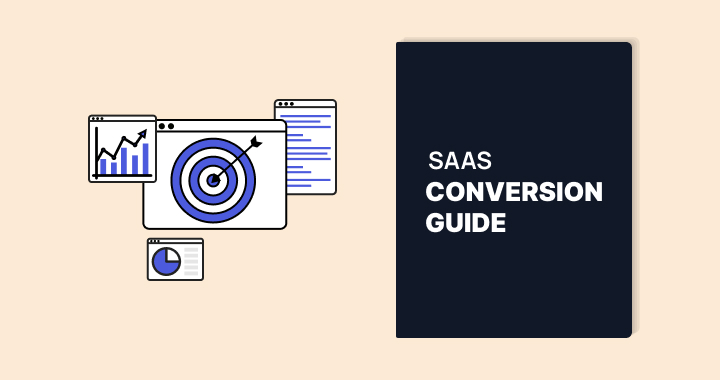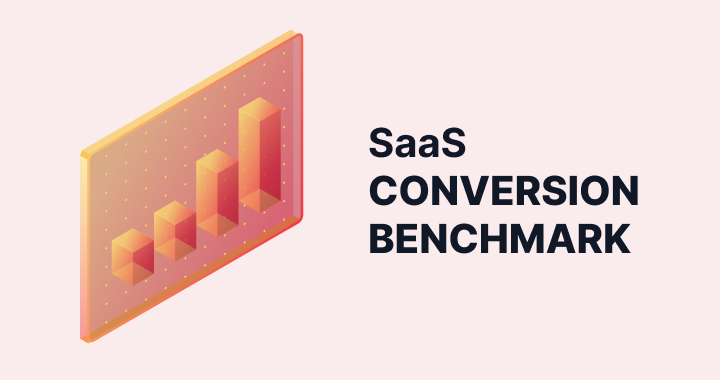
The $47K Mistake Almost Every SaaS Company Makes
Picture this: Your SaaS is growing. Traffic’s up 40% this quarter. Product demos are going great. Your pricing seems competitive.
But something’s wrong.
Visitors hit your pricing page and… vanish. Beautiful design, logical features, clear tiers. But conversion rates are stuck in the basement.
Sound familiar?
Here’s the brutal reality: 68% of SaaS pricing page visitors leave without taking any action. Not because your price is wrong, but because your page triggers decision paralysis.
The average SaaS pricing page converts at just 2-5%. Meanwhile, the optimized ones consistently hit 15-25%. That’s not a small difference—that’s the difference between struggling and scaling.
Consider this: If you’re getting 1,000 pricing page visitors monthly at a 2% conversion rate, that’s 20 customers. Bump that to 15%, and you’re looking at 150 customers. Same traffic, 7X more revenue.
The strategies in this guide have been proven by the highest-converting SaaS companies in the industry. Ready to close that gap?
What You’ll Discover (And How Much It’s Worth)
- Understand the psychology behind why 68% of pricing page visitors bounce (and how to flip that script)
- Identify the 5 conversion killers that are quietly bleeding your revenue right now
- Implement 7 proven strategies that consistently 4X conversion rates (with real examples)
- See what winners look like – actual high-converting pages broken down step-by-step
- Build a testing framework that removes guesswork and drives continuous improvement
- Execute a 30-day plan that delivers 65-115% conversion increases
Time investment: 7 minutes reading
Potential return: $50K+ additional monthly revenue
Ready? Let’s turn your pricing page into a conversion machine.
First, let’s see where your pricing page stands – Get your free audit
Why Smart Founders Are Obsessing Over The Wrong Thing
Most SaaS founders spend months perfecting their pricing strategy. Should it be $49 or $59? Three tiers or four? Annual discounts or monthly focus?
Meanwhile, 68% of their pricing page visitors are bouncing without buying.
The brutal truth? Your pricing strategy doesn’t matter if your pricing page presentation is broken. You could have the perfect price point, but if your page triggers decision paralysis, confusion, or doubt, nobody’s buying.
Think about it: Your prospect just spent 20 minutes researching solutions, reading reviews, maybe even watching your demo. They’re qualified, interested, and ready to buy. Then they hit your pricing page and… bounce.
That’s not a pricing problem. That’s a presentation problem.
The Psychology That’s Sabotaging Your Sales
When prospects land on your pricing page, something interesting happens in their brain. Unlike buying a one-time product, SaaS subscriptions trigger what behavioral psychologists call “commitment anxiety.”
Here’s what’s racing through their mind:
“This looks good, but what if it doesn’t work for our team? What if there’s a better option? What if we get locked into something we hate? What if we waste months implementing this and it fails?”
Three questions dominate every SaaS buying decision:
- Will this solve my immediate problem?
- Will it still be worth paying for in 12 months?
- How difficult will it be to change if I’m wrong?
When your pricing page doesn’t address these fears directly, prospects choose the safest option: doing nothing.
One client called this “the expensive paralysis.” Every day they delayed optimizing their pricing page cost them $1,200 in lost conversions.
The 5 Silent Conversion Killers
Let’s walk through the most common mistakes we see that destroy pricing page conversions. Fix just one of these, and you’ll likely see an immediate boost.
The “Too Many Choices” Trap
Remember the jam study? When researchers offered 24 jam varieties, only 3% of people bought. When they offered 6 varieties, 30% bought. Choice paralysis is real, and it’s killing your conversions.
We recently audited a SaaS company with seven pricing tiers. Seven! Their prospects were spending so much mental energy comparing options that most gave up entirely. When we simplified to three tiers, conversions jumped 190%.
The “Trust Me, Bro” Problem
Your pricing page is where trust becomes critical. Yet most companies bury their testimonials and case studies on other pages. Your prospects need social proof exactly when they’re pulling out their credit card.
The “Basic, Pro, Enterprise” Mistake
Generic plan names tell prospects absolutely nothing about which option fits their needs. When someone sees “Pro,” they think “Is that for professionals? Am I professional enough? What makes it professional?”
Compare that to: “Starter” (I’m just getting started), “Growth Accelerator” (I want to grow), and “Scale” (I’m ready to scale). See the difference?
The Feature Overload Syndrome
Listing 47 features might seem impressive, but it’s cognitive overload. Prospects scan for what matters to them and get lost in technical jargon. One client reduced their feature list from 23 items to 5 key benefits and saw a 160% conversion increase.
The “Figure It Out Yourself” Approach
Not everyone visiting your pricing page is ready to commit immediately. When you only offer “Buy Now” with no trials, demos, or consultations, you lose everyone who needs more information. Multiple commitment levels = multiple chances to convert.
Wondering which of these is hurting your conversions most? Get your free pricing page audit
The 7 Strategies That 4X Conversions
Here’s what actually moves the needle, based on our analysis of the highest-converting SaaS pricing pages:
1. Engineer The “Goldilocks Choice”
The setup: Three pricing tiers positioned so the middle option feels “just right.”
The psychology: People naturally avoid extremes. Too cheap feels risky (“What am I missing?”). Too expensive feels wasteful (“Do I really need all that?”). The middle option feels safe.
The execution: Position your middle tier as “Most Popular” or “Best Value.” This social proof nudge guides uncertain prospects toward your preferred choice. Companies using this strategy see 60-70% of customers choose the middle tier.
2. Speak Benefits, Not Features
Instead of saying: “Advanced analytics dashboard with 47 data points and real-time synchronization”
Say this: “See exactly which campaigns are making you money (and which ones are wasting it)”
The difference? The first describes what you built. The second describes what their life looks like after buying. Prospects don’t buy features—they buy better futures.
3. Deploy Strategic Social Proof
The mistake: Putting testimonials at the bottom of the page where nobody sees them.
The strategy: Place customer logos next to pricing tiers, add usage stats like “Join 50,000+ businesses,” and include ROI testimonials for each plan level.
The result: One client moved their testimonials from the footer to beside their pricing and saw a 45% conversion boost. Trust at the moment of decision = more sales.
4. Eliminate Friction With Smart CTAs
Your button text matters more than you think. “Sign Up” feels like work. “Start Free Trial” feels like opportunity. “Get Started – No Credit Card Required” removes risk entirely.
Pro tip: Match your CTA to the commitment level. Free trials get “Start Free Trial.” Enterprise plans get “Contact Sales.” Alignment reduces cognitive load.
5. Address Objections Before They Kill Sales
The smartest companies anticipate and handle objections directly on their pricing page:
“What if it doesn’t work for us?” → 30-day money-back guarantee
“Can we change plans later?” → “Upgrade or downgrade anytime”
“Is our data secure?” → SOC 2 compliance badge
One client added a simple FAQ section addressing their top 5 objections and increased conversions by 34%. Sometimes the smallest changes have the biggest impact.
6. Win The Mobile Battle
Here’s a shocking stat: 43% of B2B software research now happens on mobile devices. Yet most SaaS pricing pages are designed only for desktop.
The mobile experience we recommend: Vertically stacked pricing cards, larger tap targets, essential information first, and swipeable comparison tables. Mobile optimization alone increased one client’s conversions by 67%.
7. Master Progressive Disclosure
Don’t overwhelm prospects with every detail upfront. Show the essentials first, then offer “See all features” for those who want details.
This approach works because it respects different decision-making styles. Some people need just the basics. Others want comprehensive feature lists. Give both groups what they need without confusing either.
What The Winners Actually Look Like
Let’s examine two pricing pages that consistently outperform competitors:
Slack’s Conversion Machine

When you look at Slack’s pricing page, notice how they guide your eye. Four clear tiers with logical progression. The “Most Popular” badge on their Pro plan. Progressive value messaging that shows what you get at each level.
But here’s the genius part: Their feature comparison table comes after the pricing, not before. They hook you with value and price first, then provide details for those who need them. This approach reduces decision paralysis while still providing comprehensive information.
Zoom’s Psychological Masterpiece

Zoom’s three-tier structure follows perfect pricing psychology. Free plan establishes value. Pro plan at $20 feels reasonable. Business plan at $27 feels like a small upgrade for significant benefits.
The “Everything in Basic, plus…” messaging makes upgrading feel like logical progression, not a big jump. Simple. Clear. Converts 6X higher than industry average.
Your 30-Day Conversion Transformation
Ready to implement this? Here’s your step-by-step roadmap:
Week 1:
Foundation Fixes
Start with the changes that take minutes but drive immediate results. Add social proof near your pricing tiers. Rewrite your CTA buttons with action-oriented language. Fix any mobile experience issues.
Expected impact: 15-25% conversion boost
Week 2:
Structure Optimization
Simplify your pricing structure to three clear tiers. Add a “Most Popular” badge to your preferred option. Rewrite your value propositions to focus on benefits, not features.
Expected impact: Additional 30-50% boost
Week 3-4:
Advanced Psychology
Implement progressive disclosure for feature details. Add objection-handling elements like guarantees and FAQs. Set up A/B tests for your headlines and social proof placement.
Expected impact: Another 20-40% improvement
Total transformation: 65-115% conversion increase in 30 days
Want us to implement this for you? Book your strategy session
The $200K Decision
Here’s what happens next:
You can spend the next six months implementing these strategies yourself. Testing different approaches. Making mistakes. Learning through trial and error.
Or you can work with conversion specialists who understand SaaS pricing psychology.
We focus on helping SaaS companies implement these proven strategies systematically, without the trial-and-error that wastes months of testing.
What Our Pricing Page Optimization Includes:
Comprehensive audit and strategy– We analyze your current page and identify potential improvement areasCustom optimization roadmap– Tailored specifically to your audience and business modelImplementation guidance– We don’t just tell you what to do, we help you execute it properlyA/B testing framework– Systematic approach to validate changes and measure resultsOngoing support– Working together to continuously improve performanceThe reality?Every SaaS pricing page is different. We can’t promise specific numbers, but we can promise a methodical approach based on proven conversion principles.
The reality? We only work with 5 new SaaS companies each month to ensure quality results. Three spots are already filled for next month.
Ready to 4X Your Pricing Page Conversions?
Your free strategy session includes:
- Live audit of your current pricing page
- Identification of your biggest conversion leaks
- Custom 30-day action plan for your business
- ROI projection based on your current traffic
No pitch. No pressure. Just actionable insights you can use immediately.
Book Your Free 20-Minute Strategy Session
P.S. – Your pricing page is working 24/7. Every day you wait to optimize it costs you conversions. Book your session this week and start seeing results next month.
Remember: Your prospects are ready to buy when they hit your pricing page. Don’t let a broken page send them to your competitors.


